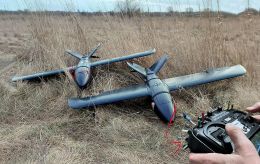Battles near Pokrovsk: How Ukrainian 110th brigade holding back Russian attack on city
 A soldier of the 110th brigade near Pokrovsk (All photos by RBC-Ukraine)
A soldier of the 110th brigade near Pokrovsk (All photos by RBC-Ukraine)
Russia is not giving up its attempts to capture Pokrovsk. The battle for it will be one of the key battles on the entire front and may determine the fate of the war. Read RBC-Ukraine's report to find out how the soldiers of the Ukrainian 110th separate mechanized brigade are defending Pokrovsk and what they say about their service, weapons, and the Russian troops.
For 2 years, the soldiers of the Ukrainian 110th separate mechanized brigade held back the Russian offensive in the Avdiivka sector. After a short rotation, the soldiers returned to the defense of the most difficult section of the front - the Pokrovsk direction, where the Ukrainian military had already managed to shoot down Russian Su-25 fighters. Now the soldiers are facing an extremely difficult task to hold the defense of the city and prevent the Russians from capturing it.
Brotherhood of FPV drone unit
The greenish forest belt lushly planted with trees is a rarity at the front. Usually, at ground zero and closer to Russian positions, trees and bushes are mowed down by mortars and burned by artillery. In the still warm season, these green borders are a great advantage in camouflage. Under the cover of greenery, you can hide and effectively work on the enemy.
We are greeted by an FPV team that is off duty today. The UAV operator with the call sign “Staryi” (Old in Ukrainian - ed.) is performing combat missions here with his younger brother, the navigator, and the sapper in the group is a colleague of “Staryi” whom they have known for a long time. So when it is said that whole Ukrainian families defend Ukraine from Russia, it is not an exaggeration at all.
The younger brother, “Google,” found out that his brother was being transferred to the front and immediately decided that he had to go to war with him. He took the application and went to serve in the 110th Brigade, although he could have stayed in civilian territory. He says the brotherhood helps a lot in combat work.
“When we are in the air, I lead him from the very beginning to the very end of the flight. As we have been communicating together since childhood, he understands me in such elementary words. We understand each other at a glance,” says the navigator.
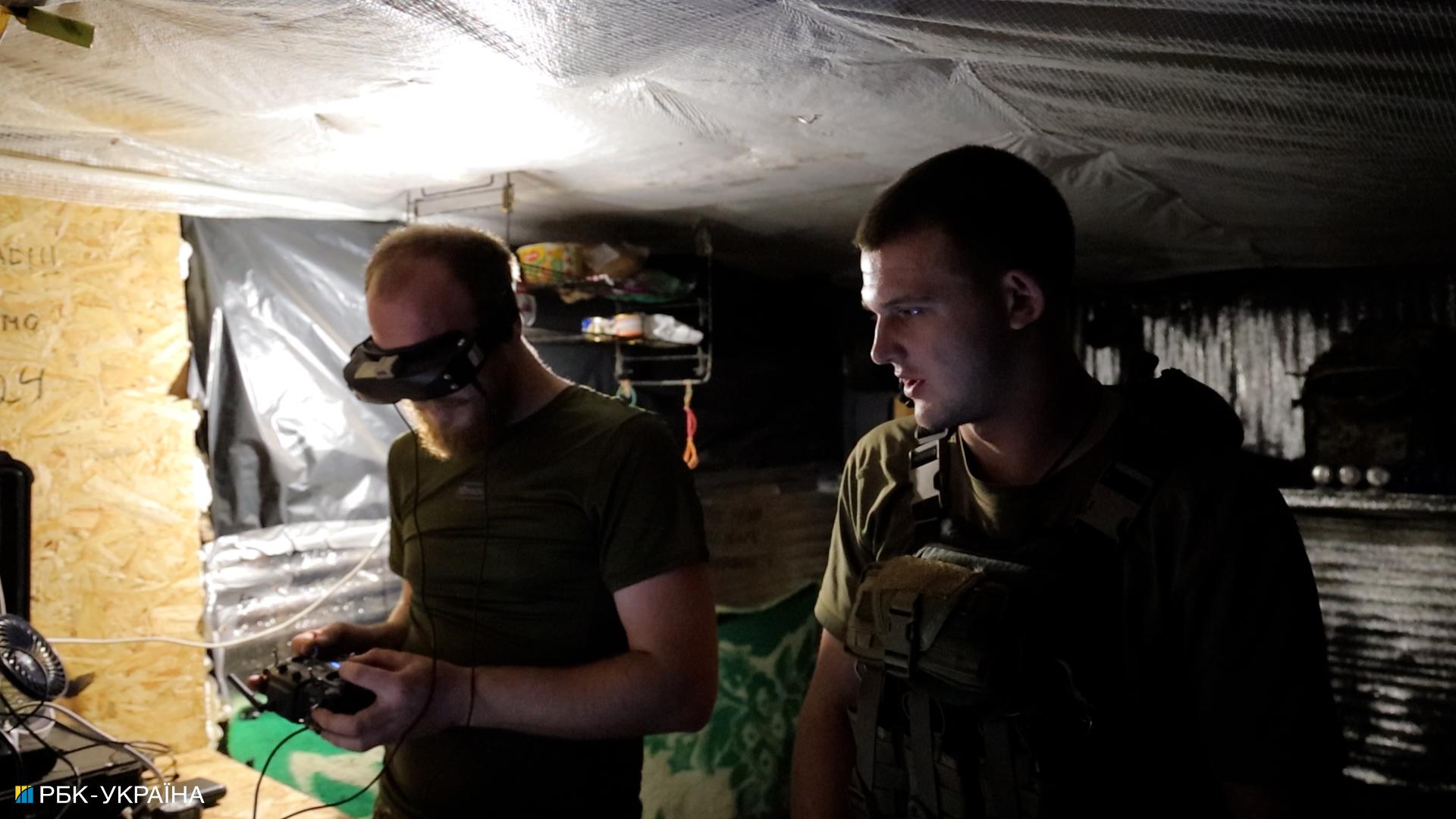 Photo: RBC-Ukraine
Photo: RBC-Ukraine
“Staryi” is also glad to have "Google" by his side. At least here he knows that his brother is okay. “When we support each other, it works out much better than with strangers, because a close person is a close person,” the soldier says.
It is already getting light outside. In the dugout, the soldiers are laying out equipment and setting up communications, and they can hear a good morning greeting on the radio. The rest of the brigade's groups are also at their positions. Several crews of attack drones are working in parallel. The night birds pass the baton to the day birds. The work does not stop day or night. Russian assault groups are moving in around the clock, so we need to constantly counteract and destroy them.
The FPV team consists of 3 people. The sapper prepares the ammunition and attaches it to the kamikaze drones. Precision is very important in this business because an improperly equipped drone can detonate early and harm its own. Before the FPV drone takes off, the navigator first launches a reconnaissance UAV, which is used to adjust the flight to the target. And then the pilot flies the kamikaze drone and hits the target.
Sometimes it takes several flights to hit a target. Intelligence reported a concentration of Russian army personnel in one of the houses. But first, they had to blow up the gate, and then make a second flight to fly inside the building and hit the Russian occupants.
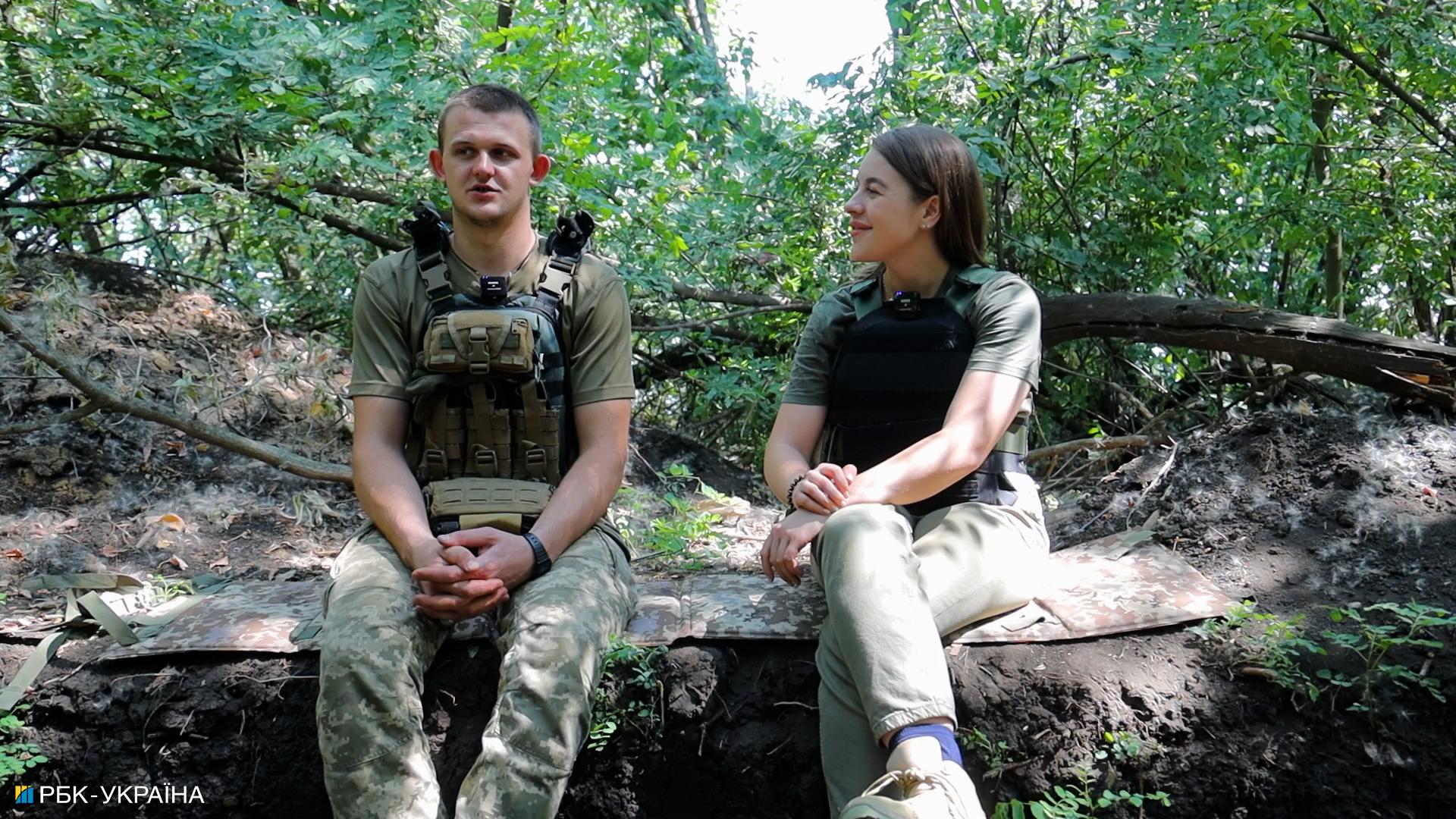 Photo: RBC-Ukraine
Photo: RBC-Ukraine
An FPV drone can fly into almost every crevice - a dugout, a house window, a vehicle cabin. “We had such an opportunity to look into the most closed parts of the settlement. That is, there were sheds and hangars that the reconnaissance could not look into. So we decided to try to fly in and see what was there. We found a bunch of equipment and started burning it. Little by little, we burned a lot of it,” the navigator recalls.
Speaking about the problems, the guys point out Russia's superiority in the number of weapons, even in kamikaze drones. Ukrainian units receive supplies from the state and volunteers, but this is not enough to effectively counter such a large number of Russians. That is why, the Ukrainian military says, it is important to increase the production of drones and ammunition. If we succeed, the situation on the battlefield will be completely different - in Ukraine's favor.
Meeting with Czech Vampire
Evening in the East signals the start of work. We gather at a pre-determined place to join a combat mission together with the artillerymen. Preparations begin in the evening, and the combat work itself will take place at dawn.
Over time, we get used to driving without headlights and navigation on night roads - this is not allowed here. We are completely disguised from Russian troops. The main thing is not to get lost. But the Ukrainian military is coping with this perfectly.
The Vampire MLRS or RM-70 is a Czech multiple rocket launcher system similar to the Soviet Grad but with an improved design. Instead of the Ural, the system is based on the Tatar T813. This is an armored vehicle that allows the crew to survive.
The rocket system has 40 rounds of 122-caliber ammunition weighing 66 kilograms each and a range of up to 20.5 kilometers. The difference and advantage of the Vampire system is that two minutes after the first salvo, a second salvo can be fired and the combat position can be left before the Russian strikes. The MLRS launcher is equipped with a radio station, fire extinguishing, and weapons of mass destruction protection.
“It's a big plus that it has an armored cabin. Several times it happened that we fired back, and then it started hitting us. We could hear the explosions and debris hitting the cabin near us. But, thank God, no one was hurt, and we managed to leave the firing position. If it had been our Ukrainian Grad, it would have hit us,” says the senior officer of the 415th battery.
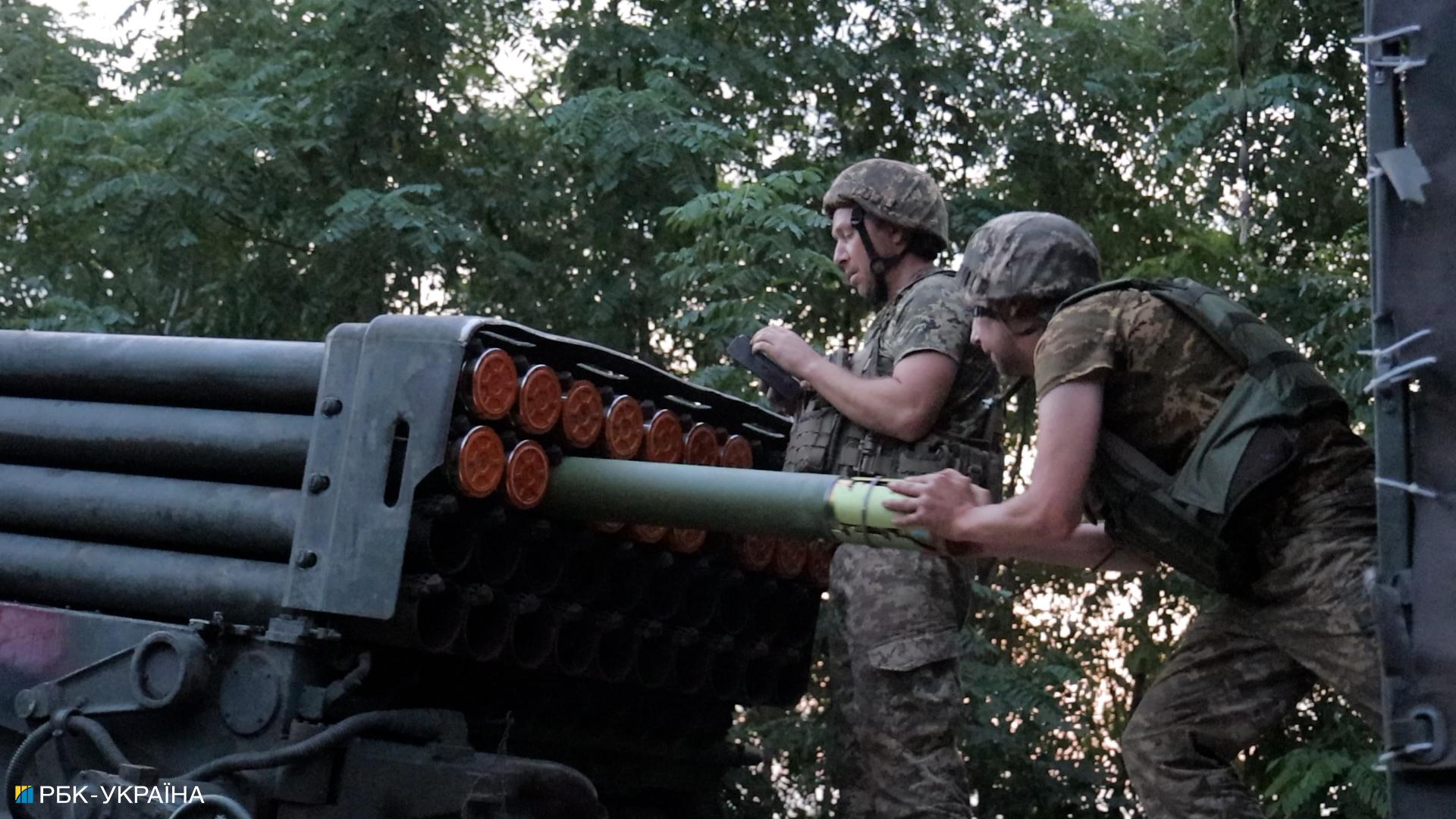 Photo: RBC-Ukraine
Photo: RBC-Ukraine
We arrived at the assembly point, but we did not see any equipment here, for safety reasons, the combat vehicle and ammunition were in different places. Even in the darkness, the fuss begins - it's time to load the ammunition. Each charge is huge, bigger than an average adult man. It takes more than one hand to load them into the car.
All this is done in complete darkness, with only a few headlamps illuminating the work. From time to time, the dogs that always accompany the Ukrainian military get into their light. Despite the seriousness of the task, the animals happily wag their tails and send their owners on their way.
We leave for the position when it is still completely dark, and we have to charge the rocket system before sunrise. We hear the roar of an engine from afar, and a rocket launcher moves out of the field against the background of barely visible sunlight. Everything happens very quickly, and the soldiers charge the system without wasting time.
“The advantage is that it has buckets. It can bury itself. Because its most vulnerable point is the wheels. Because they are not metal, it is very easy to hit them with debris. And she can make a caponier herself. And there were times when we hadn't prepared a firing position yet, and needed to hide somewhere in the woods. It goes straight in and will knock down any thicket,” recalls the senior battery officer.
This Vampire has an unusual mascot. On the front of the unit, there is a large boar's head. “When we were in Lysychansk, hiding at some base, we accidentally found this boar. At first, we attached it to a bucket as a joke, and as you can see, it is still our battery's mascot,” says the senior officer.
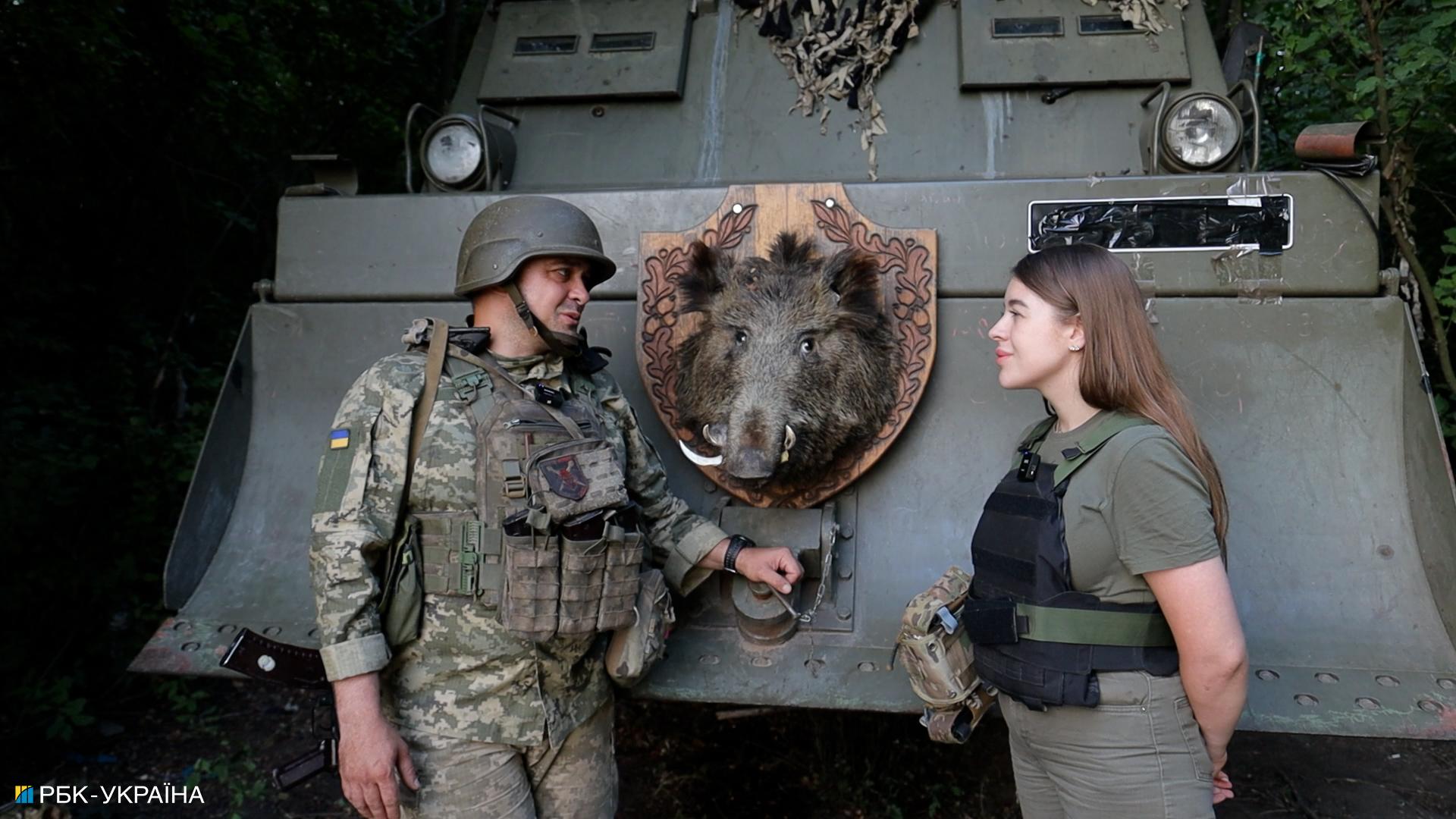 Photo: RBC-Ukraine
Photo: RBC-Ukraine
It takes a little more time to charge the multiple rocket launchers. When all 40 of them are in place, they can go out to practice. The crew goes to the firing point, and we follow. On the way, we realize why it is important to have electronic warfare systems on every vehicle. Suddenly, we hear a shout from the driver: “FPV!” Brakes screeched and a loud explosion. Russia used a kamikaze drone right in front of us. Only a split second saved us. If we had not stopped in time, the drone would have hit the car.
It was a bit of an adventure, but the targets made it to the firing position. Here they are already setting up - the gunner sets the target, and the whole team prepares to practice. “We arrived, we set up. We set up the fire and go,” is how one of the soldiers describes his work.
The firing itself is quite quick, but there is a lot of preparation behind it. The rocket system hits large areas, destroying almost everything the shells hit.
“This machine does not hit a point, but entire areas with volley fire. Now the Russian occupants feel quite free in one of the settlements, they are now storing both personnel and equipment there. So we are shooting at them. If the intelligence has spotted them, then we hit them,” says the 415th.
“We're making the final adjustments and waiting for a signal from aerial reconnaissance.
“Fire!”
The air is torn by the loud sound of volleys. Several shells went off. First, there was a hit. Later, the soldiers wait for the coordinates to be confirmed and fire the entire package at the Russian targets. It is not immediately possible to find out what exactly the soldiers hit, because as soon as they have worked, they quickly leave the firing position before the Russian artillery strikes back.
After the work, the soldiers can rest a bit. After 2 years, fatigue is showing, both mentally and physically. But they are still not going to give up.
“I continue to fight. I am always guided by the exploits of our fighters from the Ukrainian Insurgent Army. They fought for their independence for 10 years practically in the underground, without any material benefits, knowing that they could be captured and killed at any time or sent into exile to Siberia or some other place. My uncle was in those camps. That's why I know who we have to fight and what we have to fight for,” admits the senior battery officer.
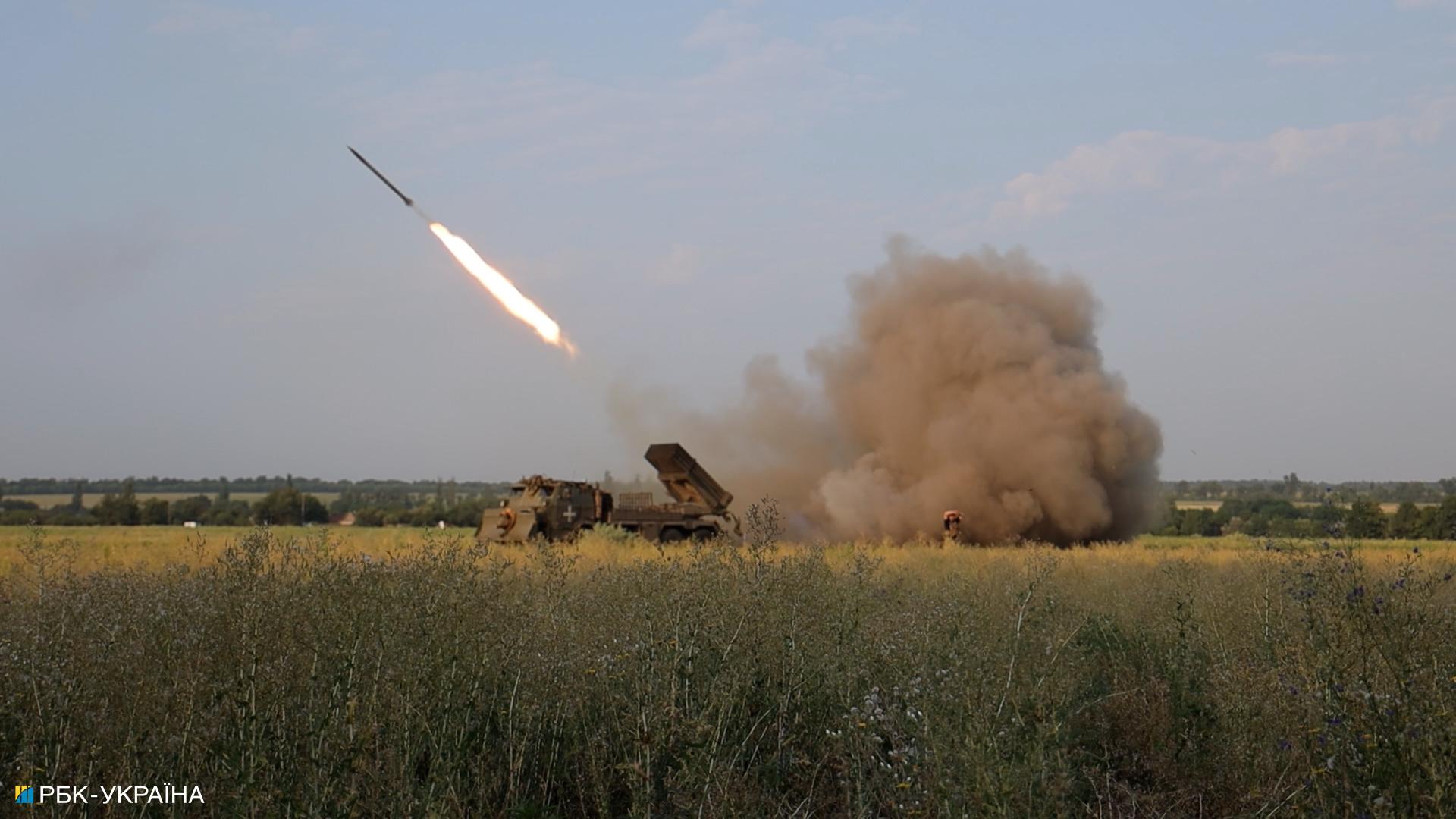 Photo: RBC-Ukraine
Photo: RBC-Ukraine
Night reconnaissance men
Aerial reconnaissance men are the eyes of the Ukrainian Defense Forces. Neither drones nor artillery can work without them. Thanks to drone operators, targets are tracked, fire is adjusted, and the enemy is monitored around the clock. The “eyes” must be in the sky around the clock.
This time we are on duty with a night aerial reconnaissance group. At dusk, we reach the landing, where a small dugout is camouflaged among the trees. It is cozy inside - there is a table and beds, coffee, and goodies on the table.
“We usually have coffee or tea here. If something runs out, we pass it on. The shift that comes in brings everything in. We used to cook eggs and soups here. We have a gas cylinder, a kettle, a saucepan, everything we need,” the aerial reconnaissance man tells about his combat life.
It is already completely dark outside. This means that the drone can go on duty. The operator makes the first flight around the area and shows us the aftermath of the shelling and the destroyed Russian equipment.
“This is where the Russians were going, but they didn't get there. They were moving on an armored personnel carrier and a tank. And here are factories, hangars, houses - everything was destroyed. And this is what's left of the landings - stubs,” the UAV operator comments.
Unfortunately, all the settlements occupied by the Russians look the same and are hard to distinguish from each other. Almost every house is in ruins. All the trees are burned. Everything looks gray and gloomy.
The cameraman continues to work and notices the movement of the Russians. A column of vehicles is moving towards Ukrainian positions. Now we need to keep a close eye on them and help the firing teams repel the assault. “Does anyone from the artillery want to share some shrapnel with them?” "Tabletka" (Pill in Ukrainian - ed.) operator jokingly transmits into the radio.
In reality, everyone is on edge. Intelligence, artillery and other units are working together. The Russians must not be allowed to advance with their equipment, as this could lead to the loss of positions.
The Russian occupiers do not change their tactics of assaults in small groups. They move out day and night and try to attack. Control over each movement depends on aerial reconnaissance. Not noticing Russians and missing them can be very costly. That's why there are always a number of crews patrolling the air at the same time - if one goes down, the next one takes off immediately.
It's 2:37 a.m., and you can only dream of sleeping here. Though one does not want to sleep. On the front lines, you fully experience what the military feel here. When the Russian column moves towards Ukrainian positions, you have to do everything to stop it, and all units work in symbiosis. When the assaults are repelled, we are relieved that this time we managed to prevent Russia's breakthrough.
Meanwhile, the Ukrainian soldiers share their thoughts on those who are fighting against them in this area and on the Russian military leadership. “They are a herd. And a herd is easier to manage. They don't need smart people. Everyone who was smart there, they managed to escape so that they would not be mobilized. And the rest of them did not. Who would want to go to war on someone else's land, just to give their life, for what? For money. I believe that money can be earned. If you cannot earn it, then you have no head,” says the UAV operator.
Tankers
Sunset against the backdrop of a field covered with sunflower flowers that have already blossomed. Two dogs are running nearby, waiting for their owners to return from a mission. One of them is symbolically named Tank. As soon as the roar of the engine is heard from afar, the dogs start running happily. The silhouette of an armored vehicle is already visible on the horizon. The T-64 crew is returning from a combat mission.
The T-64 is a Soviet main battle tank armed with a 125 mm cannon and two machine guns, one of which is anti-aircraft, with a range of up to 10 km. The hull is equipped with composite armor. The tank can reach a speed of up to 60 km.
The crew is waving happily from the tank's turret, all happy to be back from combat. They are immediately met by mechanics. As soon as the tank is parked in a camouflaged position, another job begins. The mechanics conduct a full inspection of the armored vehicle to identify and fix any malfunctions, as any breakdown can be fatal during combat.
“We do this every day, in case of any leakage, it must be fixed,” says the mechanic.
The work of mechanics is extremely important, as the safety of the crew depends on them. The guys also reload the ammunition and refuel the tank. It takes about an hour for each crew to prepare.
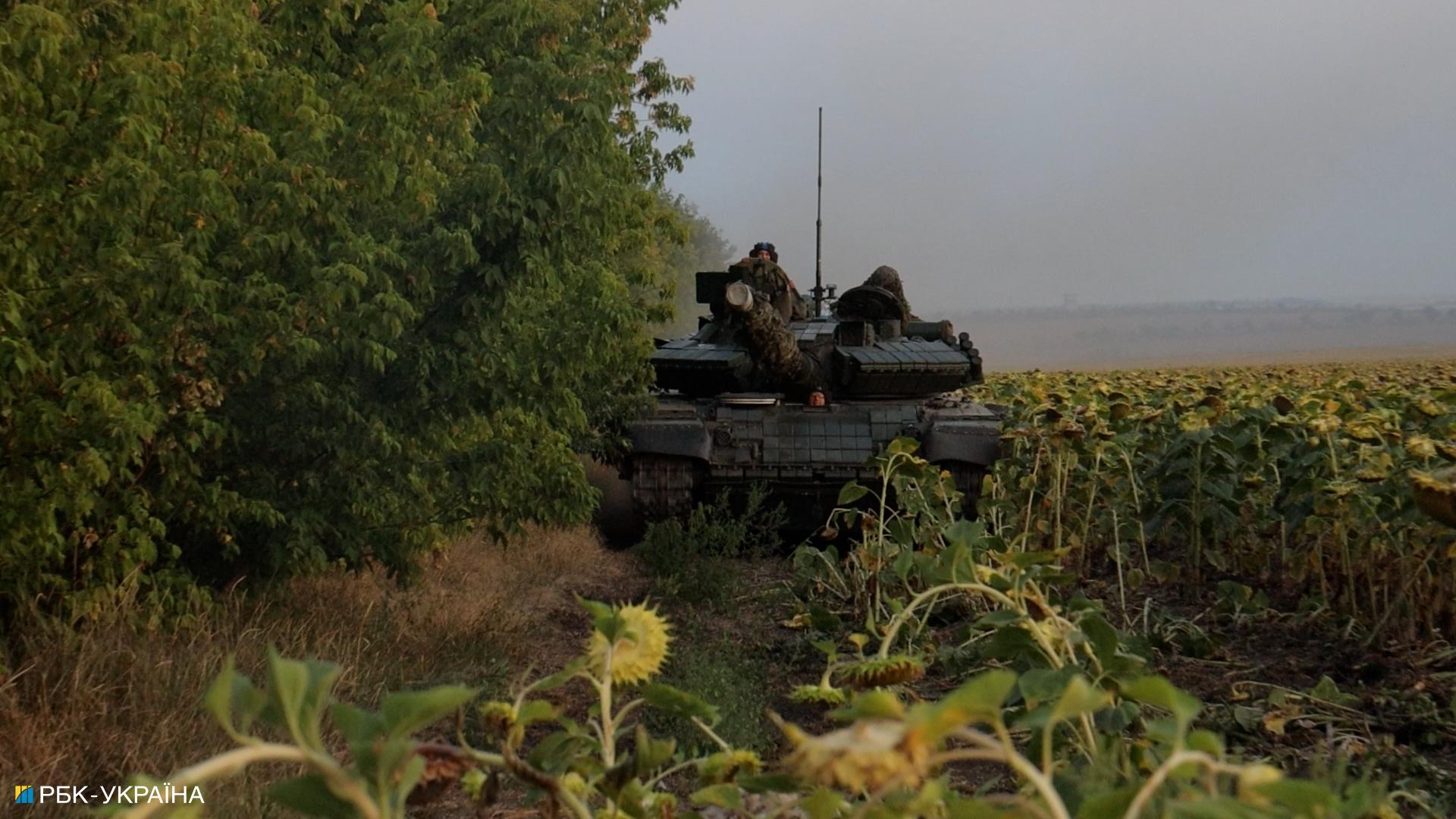 Photo: RBC-Ukraine
Photo: RBC-Ukraine
Meanwhile, the crew commander with the call sign "Nachos" says that this tank is quite multifunctional. It can work on closed positions and direct fire. It can drive up close to the Russian troops and practice with fire. It can also work like artillery at a distance of up to 10 kilometers.
“The advantage is that it is more accurate than mortars and artillery. Because they have stabilized shells, and we don't have that, and it gives a more accurate result,” says the commander.
The Ukrainian soldiers also say that although this tank is armored, it is superior to other armored vehicles in maneuverability. It can be used both in open terrain and in battles in populated areas. Depending on the ammunition, it can demolish an entire wall of a building and knock the Russians out of hiding. However, of course, this all takes place in complex work with other units. Russian shells always come in response, so fire cover from adjacent groups is important.
The soldiers of the 110th brigade have already taken on many difficult challenges and held the line against Russian attacks in the most difficult areas. Now they are facing the same task, to save the city in the hellish area near Pokrovsk. Russian forces are trying to intensify the offensive daily, but Ukrainian fighters are holding on. Although they are tired of years of war, they dream of more drones, armored personnel carriers, and a little reinforcement. And they remind us that this war is not only for those at the front but for each of us.

